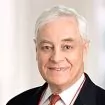On September 27, 2011, U.S. District Judge Jed S. Rakoff issued an important ruling in the action commenced by Irving Picard ("Trustee"), trustee for Bernard L. Madoff Securities LLC ("Madoff"), against a group of individuals and investment entities affiliated with the New York Mets (collectively, "Defendants"). Picard v. Katz, No. 11 Civ. 3605 (S.D.N.Y. Sept. 27, 2011).
Judge Rakoff dismissed nine of the 11 counts against Defendants, leaving only the Trustee's claim to void actual fraudulent transfers as a possible avenue of recovery against the Defendants.1 The ruling limits the Trustee's possible recovery to those transfers that occurred within two years before the Madoff bankruptcy rather than the six-year reach-back allowed under New York state law and, if upheld on appeal, would extinguish billions of dollars of claims held by the estate.2
Background
Defendants invested heavily with Madoff before it collapsed in 2008 amidst allegations of widespread fraud. Over a number of years, Defendants had received transfers from Madoff on account of their principal investment and apparent profits. Of course these fictitious profits were revealed to be the ill-gotten gains of a Ponzi scheme. The Trustee filed a complaint against Defendants seeking to recover over a billion dollars on account actual fraudulent transfers, constructive fraudulent transfers and preferences received by Defendants from Madoff (as amended, the "Complaint").3 Defendants moved to dismiss the Complaint.
The Opinion
Section 546(e) Safe Harbor
Notwithstanding sections 544, 545, 547, 548(a)(1)(B), and 548(b) . . . , the trustee may not avoid a transfer that is a . . . settlement payment . . . made by or to (or for the benefit of) a . . . stockbroker . . . or that is a transfer made by or to (or for the benefit of) a . . . stockbroker . . . in connection with a securities contract . . ., except under section 548 (a)(1)(A) of this title. (emphasis added)
Defendants argued that all of the allegedly preferential and constructively fraudulent transfers challenged by the Trustee are protected from avoidance by this "safe harbor." The Trustee countered that application of Section 546(e) to these transfers would be inconsistent with Congress' intent because avoiding the transfers to Madoff's "customers" would not cause the displacement in the securities markets that this "safe harbor" was intended to prevent.
Judge Rakoff found that Madoff was a stockbroker and that the payments made to Madoff's customers fall within the Code's "extremely broad" definition of "settlement payments." And, even if a payment was not a "settlement payment," it would nevertheless qualify as a "transfer made . . . in connection with a securities contract."4 Therefore, he held, "[b]y its literal language . . . the Bankruptcy Code precludes the Trustee from bringing any action to recover from any of Madoff's customers any of the monies paid by Madoff Securities to those customers except in the case of actual fraud."5
Actual Fraud: Profits and Principal
As a result of the Section 546(e) safe harbor, the only avoidance power that remains available to the Trustee is Section 548(a)(1)(A), which applies to actual fraudulent transfers. But Section 548(c) of the Code limits the Trustee's avoidance power further still:
With respect to the fictitious profits received by Defendants from Madoff, Judge Rakoff acknowledged that the "Trustee might well prevail on summary judgment seeking recovery of the profits" because of the "difficulty Defendants will have in establishing that they took their net profits for value."6 But with respect to the principal invested by Madoff's customers, Judge Rakoff held that "it is clear" that Defendants "gave value to the debtor." Therefore, the principal invested by the Defendants "may not be recovered by the Trustee absent [a showing of] bad faith."
Good Faith
Having determined that Defendants received a return of their principal from Madoff in exchange for value, the Trustee must show that Defendants did not receive these funds in good faith in order to overcome their Section 548(c) defense. While all parties agreed that actual knowledge of or willful blindness to Madoff's scheme would constitute a lack of good faith, the Trustee argued that even failure to investigate shows a lack of good faith, i.e., that Defendants were on "inquiry notice."
Again Judge Rakoff disagreed with the Trustee. He reasoned that, "[j]ust as fraud, in the context of federal securities law, demands proof of scienter, so too 'good faith' in this context implies a lack of fraudulent intent," and held, therefore, that "[a] securities investor has no inherent duty to inquire about his stockbroker, and SIPA creates no such duty." But, "[i]f an investor . . . intentionally chooses to blind himself to the 'red flags' that suggest a high probability of fraud, his 'willful blindness' to the truth is tantamount to a lack of good faith."7
Conclusion
Judge Rakoff's decision, if upheld, would significantly limit the Trustee's claims against Defendants.8 But Defendants still have significant exposure. As noted by Judge Rakoff, Defendants received profits in excess of $83 million in the two years prior to the Madoff bankruptcy. To recover this amount, the Trustee need not show that Defendants acted in bad faith; he only needs to prove that they did not give any value in exchange for these returns. And if the Trustee can show that Defendants were willfully blind to Madoff's scheme, he may be able to recover some or all of the principal returned to Defendants, which could amount to hundreds of millions of dollars more.9
Endnotes
1 The Trustee can also seek to subordinate the Defendants' claims against the Madoff estate to the prior payment of other creditors.
2 See, e.g., Ken Belson and Diana B. Henriques, Mets Ruling May Reduce Pay to Victims of Madoff, N.Y. TIMES, September 29, 2011, at B3.
3 Section 548(a)(1)(A) and (B) of the Bankruptcy Code, which is made applicable to the Madoff proceeding by the Securities Investor Protection Act ("SIPA"), authorizes the Trustee to "avoid" (i.e., recover) fraudulent transfers made in the two years prior to a bankruptcy with "actual intent to hinder, delay or defraud" creditors as well as certain "constructively" fraudulent transfers made while the debtor was insolvent. Section 547 of the Code also authorizes the Trustee to avoid "preferences," i.e., certain payments made to a creditor in the 90 days before bankruptcy that had the effect of improving the recipient's recovery vis-à-vis other creditors.
4 Judge Rakoff's conclusions in this regard are at odds with a decision by the bankruptcy judge in the Madoff case. In November 2010, Judge Burton R. Lifland refused to dismiss similar claims against other Madoff investors who invoked Section 546(e) as a defense to constructive fraudulent transfer and preference claims. Picard v. Merkin, 440 B.R. 243 (Bankr. S.D.N.Y. 2010). Judge Lifland found that those defendants' resort to the 546(e) safe harbor was "at best premature" and ruled that, at the motion to dismiss stage, he could not conclude that Madoff was a "stockbroker" as that term is used in the Code. Id. at 266-67. Judge Lifland also found that the account agreements between Madoff and its customers may not be "securities contracts" for purposes of Section 546(e). Id. The defendants sought leave to appeal this decision to the District Court, which request was denied by District Judge Kimba M. Wood. See Picard v. Merkin, 2011 U.S. Dist. LEXIS 97647 (S.D.N.Y. Aug. 31, 2011)("The Court finds no substantial grounds for difference of opinion as to the correctness of the standards relied on by the Bankruptcy Court in its refusal—at the pleading stage—to dismiss on the grounds of the Funds' Section 546(e) affirmative defense").
5 In addition to preventing the Trustee from seeking to avoid constructive fraudulent transfers (Section 548(a)(1)(B)) and preferences (Section 547), the safe harbor also prevents the Trustee from proceeding under Section 544. That section provides a bankruptcy trustee with access to state law avoidance statutes, almost all of which have a longer reach-back period than Section 548(a)(1). In New York, the reach-back period to recover a fraudulent conveyance is six years. See generally N.Y. DEBT. & CRED. §§ 270-281 (2011).
6 In other words, Defendants' good faith (or lack thereof) will not be sufficient to establish a defense under Section 548(c) as long as the Trustee can show that they did not take their fictitious profits "for value." This should be a remarkably easy showing for the Trustee to make in light of the well-established fact that Madoff was operating a Ponzi scheme.
7 Even though Judge Rakoff found that the standard for good faith was higher than the standard advocated by the Trustee, he nonetheless concluded that the Complaint was sufficient to survive a motion to dismiss. But he skeptically described the Complaint as "less than overwhelming in this regard," and suggested that even the Trustee "recogniz[es] the problems with this approach."
8 Given the conflicting decisions reached by Judge Rakoff on the one hand, and Judges Lifland and Wood on the other, it is possible that the Section 546(e) issue will not be resolved until it as addressed by the Court of Appeals for the Second Circuit.
9 In a companion order entered the day after the Opinion, Judge Rakoff confirmed that "[a]s a result of [the Opinion], the most that the Trustee can recover from the defendants is the total of all transfers made during [the] two-year period prior to the filing of the bankruptcy petition, which, according to the [Complaint,] appears to be approximately $386 million." Picard v. Katz, No. 11 Civ. 3605 (S.D.N.Y. Sept. 28, 2011).


